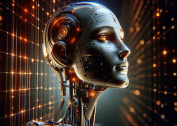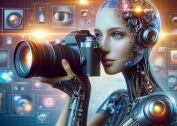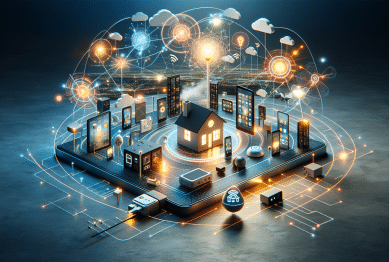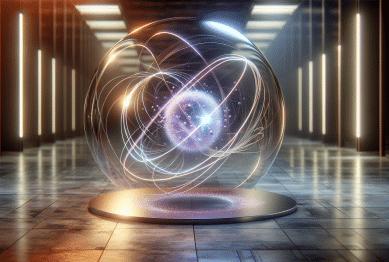The use of artificial intelligence in healthcare diagnostics is no longer theoretical—it’s redefining how diseases are detected, treated, and even prevented. From radiology and pathology to genomics and primary care, AI is being rapidly integrated into diagnostic workflows to reduce human error, speed up results, and provide data-driven insights that were previously unimaginable.
As generative models, deep learning systems, and medical imaging AI continue to evolve, they’re not replacing doctors—but they’re becoming indispensable partners in decision-making.
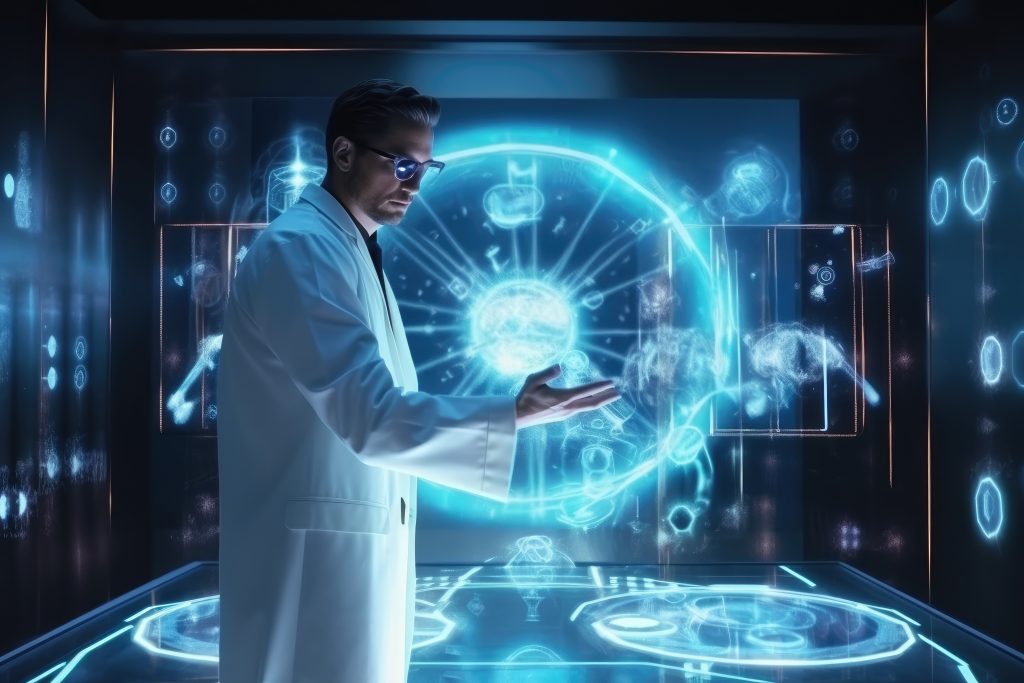
Why AI in Healthcare Diagnostics Is More Than Just a Trend
The diagnostic process in medicine has long relied on clinical judgment, supported by increasingly sophisticated tests. But with growing patient loads, data complexity, and the demand for faster, more accurate decisions, traditional methods are showing strain.
Enter artificial intelligence. Algorithms trained on vast datasets can now:
- Analyze X-rays and MRIs faster than radiologists
- Predict disease progression based on historical data
- Flag anomalies in blood tests that may be overlooked
A 2023 review published in The Lancet Digital Health concluded that AI diagnostic systems matched or outperformed physicians in over 80% of imaging-related diagnostic tasks (Kelly et al., 2023).
Emerging Trends Driving AI in Healthcare Diagnostics
1. AI in Healthcare Diagnostics for Early Cancer Detection
Early detection is the key to survival in many cancers. AI tools are now being used to analyze mammograms, lung scans, and even skin lesions with remarkable precision.
- Google’s DeepMind has shown its AI model could reduce false positives in breast cancer screenings by 5.7% and false negatives by 9.4% (McKinney et al., 2020).
- AI dermatology apps are being piloted in clinics to assist in early skin cancer triage.
2. Natural Language Processing in Clinical Notes
Doctors generate thousands of words in patient records every day. NLP-powered AI tools can now:
- Extract symptoms and correlate them with diagnoses
- Highlight overlooked risk factors
- Generate clinical summaries
Companies like Tempus and Nuance (a Microsoft company) are developing tools that convert clinical documentation into structured insights in seconds.
3. AI-Powered Radiology and Pathology
Radiologists are now working with AI systems that:
- Auto-label imaging scans
- Detect microfractures, tumors, or strokes in real time
- Prioritize cases based on urgency
Meanwhile, AI in pathology is helping analyze digitized biopsy slides, making histopathology more efficient and accessible.
Benefits of Artificial Intelligence in Healthcare Diagnostics
1. Speed and Scalability
AI can analyze complex datasets faster than humans. In emergency settings, faster diagnoses can save lives.
2. Consistency
AI systems don’t suffer from fatigue. Their consistency can reduce diagnostic variability, a common issue in manual reads.
3. Accessibility
In low-resource settings, AI tools deployed via mobile devices or cloud platforms can help bridge gaps in diagnostic care.
4. Predictive Analytics
AI doesn’t just identify current issues—it can forecast complications, relapses, or treatment failure based on patterns in the data.
Challenges and Ethical Considerations for AI in Healthcare Diagnostics
While the benefits are substantial, using artificial intelligence in healthcare diagnostics isn’t without challenges.
1. Data Bias
AI models are only as good as the data they’re trained on. If that data lacks diversity, results can be skewed—particularly in underserved populations.
2. Transparency and Explainability
Clinicians are hesitant to trust “black box” AI systems that don’t explain their decisions. There’s increasing demand for explainable AI (XAI).
3. Regulatory Compliance
AI in diagnostics is a regulated space. The U.S. FDA has approved several AI-based tools, but each use case requires stringent validation.
4. Liability and Responsibility
If an AI tool misdiagnoses a patient, who’s responsible—the software vendor, the hospital, or the physician?
Real-World Applications of AI in Healthcare Diagnostics
1. Aidoc’s Radiology Suite
Aidoc uses AI to assist radiologists with real-time scan analysis for brain hemorrhages, pulmonary embolisms, and cervical spine fractures. Their FDA-approved tools are being used in hospitals across the U.S.
2. PathAI
This Boston-based company is developing machine learning technology to improve the accuracy of pathology diagnoses. Their platform can detect features that even seasoned pathologists might miss.
3. IDx-DR
One of the first autonomous AI diagnostic systems approved by the FDA, IDx-DR detects diabetic retinopathy in retinal images without requiring a specialist to interpret the results.
What’s Next for AI in Healthcare Diagnostics?
Federated Learning
New AI models are being developed using federated learning, where data never leaves the hospital. Instead, the model learns from decentralized data—improving privacy and scalability.
Multimodal AI
Future diagnostic tools will combine data from EHRs, imaging, lab tests, and even genomics into a unified AI-driven analysis, providing clinicians with a holistic view of the patient.
Human-AI Collaboration
The best results often come from collaboration. AI can highlight potential diagnoses while physicians bring context, empathy, and clinical judgment.
Practical Guide: Implementing AI Healthcare Diagnostics Settings
If you’re a hospital or health tech company looking to integrate AI, here’s a checklist to consider:
- Start Small – Choose one use case (e.g., radiology triage or pathology analysis).
- Validate Performance – Compare AI output with human diagnoses in pilot programs.
- Train Your Team – Educate clinicians and IT staff on how to interact with the system.
- Monitor and Improve – Continuously audit performance and retrain models with updated data.
- Engage Patients – Be transparent with patients about AI’s role in their care and seek informed consent where appropriate.
Final Thoughts
The adoption of artificial intelligence in healthcare diagnostics isn’t just about using smart tools—it’s about transforming how care is delivered. While there are still challenges to overcome, AI is proving to be a powerful ally in reducing diagnostic errors, expanding access to care, and supporting medical professionals under pressure.
In the next decade, the question won’t be whether to use AI—but how to use it responsibly and effectively.
References:
- Kelly, C.J. et al. (2023) ‘AI in Diagnostic Imaging: A Meta-Analysis’, The Lancet Digital Health. Available at: https://www.thelancet.com/journals/landig (Accessed: 2 June 2025).
- McKinney, S.M. et al. (2020) ‘International evaluation of an AI system for breast cancer screening’, Nature. https://www.nature.com/articles/s41586-019-1799-6 (Accessed: 2 June 2025).
- Harvard Business Review (2023) The Promise and Peril of AI in Health Care. https://hbr.org/2024/07/the-promise-and-peril-of-ai-at-work (Accessed: 2 June 2025).





